AUGUST 2015 UPDATE – I went through the negatives, photographed each with a bellows and micro lens on a digital camera body, pulled the best ones and created a NEW AUGUST JAM GALLERY for your reminiscing pleasure or anthropological research.
The photos below are scans of actual paper prints I made in the darkroom in 1974; the new gallery uses those same 1974-vintage 35mm negatives converted to digital and enhanced a little in Lightroom and occasionally Photoshop. The new phrase is “hybrid workflow”, which usually starts with a film negative and ends with a digital image ready for printing or online display. Aspiring and seasoned film photographers may want to explore hybrid because it can speed the process of getting work online if that’s its final destination. It allows for creativity impossible under an enlarger, like compositing multiple negatives into one print. I can’t compare the quality of negatives scanned on a consumer-grade flatbed scanner and those photographed with a quality macrography lens (55mm f/2.8 Micro-Nikkor in this case), but I have no desire for a scanner after seeing how quickly and accurately I can digitize negatives this way.
A manual LumoPro LP160 flash fires through its wide-angle diffuser, a sheet of frosted lexan to get the most even light I can, the slide copier’s diffuser, negative, bellows-mounted micro lens and onto the camera’s sensor. The photo below was shot on Eastman 2238 separation film at ASA 12 and processed in Xtol stock for 9 minutes at 68 degrees. The dried negative was photographed at ISO 100 with the flash at 1/16th power and lens at f/16, though I probably need to reshoot this and the concert at a wider aperture to keep down potential diffraction. I kept the histogram hugging the right without clipping the highlights, just like with regular digital photography. The great thing about hybrid is that a photo editing program can be used to make final adjustments.
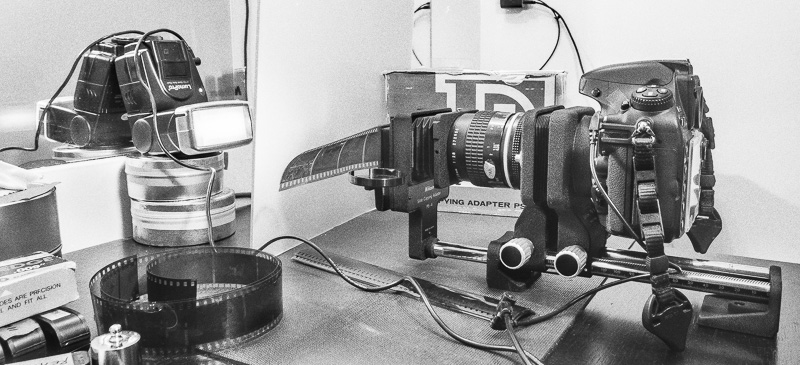
Welcome to those of you who got here by way of either BathroomDarkroom.com, our film photography chronicle-ette (it hasn’t become as expansive as in my original vision), or AugustJam.com, the new URL that points to this post that has become way more popular than its parent site. Maybe you read about the photos in Larry’s Look at the August Jam or watched his commemorative video and started searching. Maybe you just punched in the Jam to see what’s out here. However you got here, I’m glad you made it and hope you enjoy your stay. People who only want to look at photos of the 1974 concert they remember – or sort of remember – can skip all the text and scroll straight there; those not quite sure will want to read a little further.
By way of quick introduction to myself, this site and the concert that brought us all here, I was a 15-year-old aspiring pro photographer in 1974 and blessed to get backstage with a camera at what NBC’s Larry Sprinkle called “the Carolinas’ version of Woodstock”. Decades later, our 15-year-old daughter asked if I’d teach her film photography. I put together BathroomDarkroom.com to chronicle a little of what we did. That started me looking through my expando-folder of old prints from my home darkroom in my parents’ house, which turned up quite a few from that bewildering event. The natural thing to do was to write this post for aspiring film photographers and talk about what happens when darkroom technique is below par and prints start to show their age years down the road. That , it turned out, was just the start…
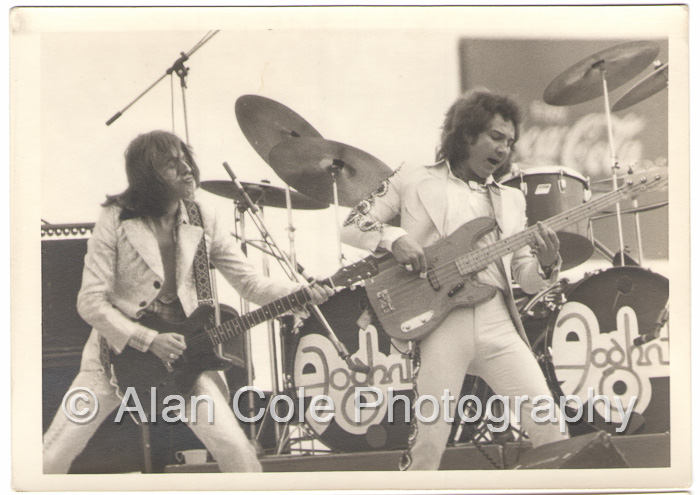
There aren’t a lot of August Jam photos online so these started coming up in searches by those of us who happened to remember it and wanted to step back forty years in time; sort of like poking around to see what’s become of an old high school or college flame… Ya’ll were kind enough to leave some comments to let me know that I had connected with at least a few of you, which is way more than I expected.
My ego got its biggest boost, though, (frankly – it’s one of the things that keeps photographers photographing) when I got a call from Larry, who told me that it was the Jam’s 40th anniversary, that he was putting together a video segment to commemorate it, and asked to use some of my photos. I happened to be standing on the somewhat remote beach sand of Kill Devil Hills, NC (OBX for you Marylanders) when the phone rang, but through the miracle of Kodak film technology from decades ago, a CrashPlan online backup of the scans for the site, a WiFi hotspot from my phone and the blessing of having our photographer-daughter’s PC with Photoshop back at the beach house, I was able to get high-resolution files to Larry that night.
Larry did even more magic by tracking down 40-year-old video straight from the bands, with Reuben Wallace editing it all down to a great three and a half minute video that you can watch here. The fact that bands were able to deliver digitized 16mm video from so long ago, so quickly, is itself amazing. A big salute to all of you techies for dropping whatever you dropped to get the clips out to Larry. This video is quite a news reel of one little part of the history of North Carolina and Rock ‘n’ Roll, and I’m honored that Larry tracked me down for some of the weekend’s photos. My mid-70’s high school mornings were filled with Larry as the voices of Big Olllllle Funky WAYS (nod to Chuckie Boo Baron) and WROQ radio stations’ maintenance man Hubert “That pigeon’s probably miles from here by now” Gleason, Myers Park aristocrat Parker Myers, Big E(lvis), Brother Bill Taker of the Pass The Loot Club and countless others from as far away as Sic Syk Lee Street and Battlestar Gastonia. Thanks, too, Mister Murry. Uh, Mister Murphy. That’s Robert Murphy in the Morning to the rest of us.
Had the concert been today, I’d have taken thousands of digital photos instead of 200-250 film photos. Hard to believe I shot that few rolls, but we amateurs didn’t think in terms of thousands of images back then, and buying twice what I figured I’d need wasn’t in the budget. I’d expose more film than that during a World 600 stock car race at that same track, but I knew what to expect from them. I obviously didn’t realize what kind of history I was walking into that August weekend. Some of the NASCAR Photos might find their way into another article.
We return you now to our regularly scheduled post
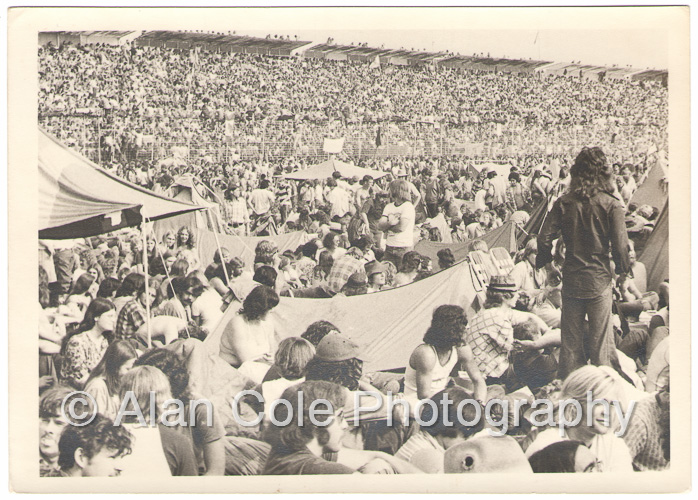
This is a great example of what came out of my bathroom darkroom in 1974. It’s fun pulling out old prints to look at, scan and put online for the two or three of you reading this the way more than two of three good enough to stop by.
This concert was one of my early big-time shoots. It was concert promoter Stan Kaplan (Kaleidoscope Productions, WAYS and WROQ radio stations), with wife Sis’s money so the story goes, who thought that Charlotte needed to host an outdoor concert after the success of the California Jam in April of that year. I’ve seen stats from various sources including an August 29 Wilmington (NC) Star News article that say 50,000 people were expected, but the actual was closer to four or five times that. Dad told me that a lot of the tackled gate crashers on Friday night before the Saturday show actually had tickets! They tore down a double perimeter of chain link fence, trampled two guard dogs and generally destroyed the infield in preparation for the Saturday show.
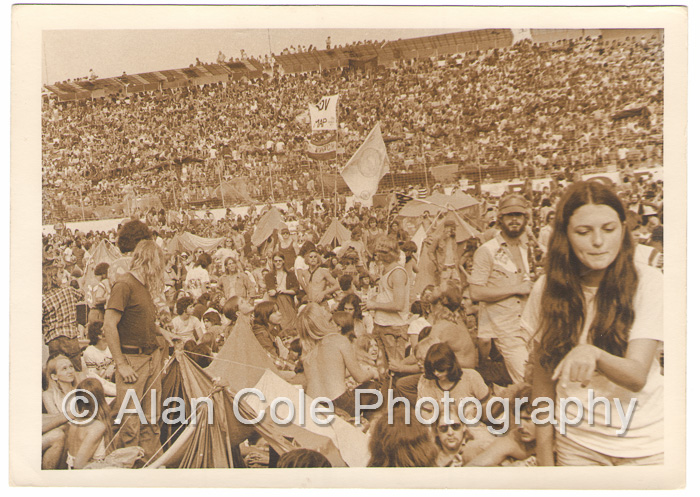
My gear was a Yashica TL Electro-X with a few high-dollar (to a 15-year-old) lenses, including the Vivitar 90-230mm f/4.5 T4-mount zoom, a long but soft Pro (Ritz Camera’s house brand, similar to Spiratone and others) 400mm f/6.3 and a 50mm 1.7 (I think) Yashinon that came with the body. Film was Plus-X for the daytime acts, with ELP, night scenes, Charlotte Police helicopter Snoopy, and the dense crowd shots on Tri-X. No idea what effect the steadily high contaminant level in the air had on film or photographer. I remember this constant urge for a Snickers, though. The two were probably unrelated.
I originally scanned these original 5×7 prints from 1974 as B&W, but that didn’t show the aging aspect of their character, so I rescanned them as color. The print tones are the best indicator I can think of for what must have been a less-than-archival washing practice years ago, or maybe that I was washing in good tasting but mineral rich well water. These were all stored in the dark.
I’ll narrate the photos later, but here they are for now. See who you recognize – and clap for the Wolfman…
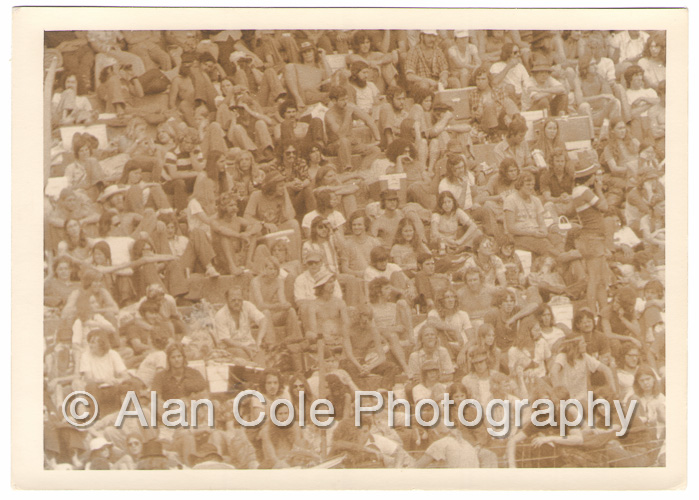
So how did a 15-year-old kid get backstage at a major event like this? It’s all in who you know. Dad worked part-time race security for Dave Suddreth, who ran either infield security or the entirety of security at the track. Mr. Suddreth asked him to work the concert for what I believe was $10.00 an hour. I heard another security guy ask my dad what time it was. Dad looked at his watch and said, “$35.00”. What does a loving dad with a camera-junkie son do when he has a chance to make pretty good moonlighting money for 1974 checking credentials at a gate at a rock concert that he has less than no interest hearing – or smelling? He does it, of course, and makes sure that the stage gate guards know that his kid is there and asks them to please let him come and go.
I was in heaven. Bulk-loaded film in the bag, a cooler full of sandwiches in Dad’s car that I had no idea would be so hard to get to, and the run of the fenced-off area backstage (the track’s pit and garage areas) and from the stage out to the mixing tower. I would later own 8-track tapes from some of these bands, but I didn’t have a car yet so no need. The Eagles stiffed the concert and no-showed. Better than listening to the bands for me, though, was photographing them.
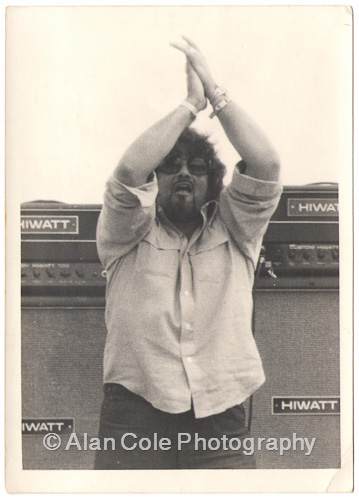
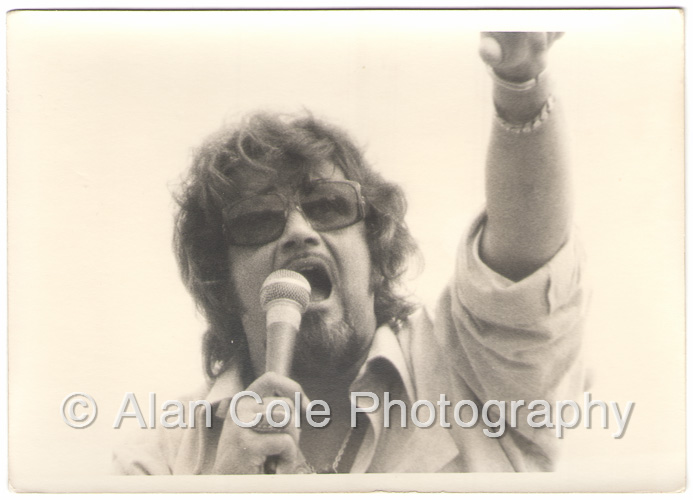
Check out this link to a video of Black Oak Arkansas’ rendition of Dixie from the August Jam that just happens to be the one during which I made the next five images. Watching that for the first time was like stepping through the Time Tunnel back to ’74. I thought I might even see myself in the mixing tower aisle, but alas… I wasn’t exactly what the videographers were looking for. I did, however, see the exact moment I made the image of Jim Dandy raising the flag! Look at 3:22 into the video; mic in his left hand, flag in his right and the flag, just for a second, blowing over his left shoulder. I didn’t see that the first few times through the tape. I was showing the video to Addison when I connected the dots. She got to see exactly where Dad was and what he was doing almost 40 years ago, verified with a doubleweight mat print in hand and video on the screen. How often do those family moments come along? It would have been more daughter-safe had it been a Broadway musical, but to borrow a phrase from Forrest Gump’s mom, “Life is like a box of chocolates. You never know what you’re gonna get.”
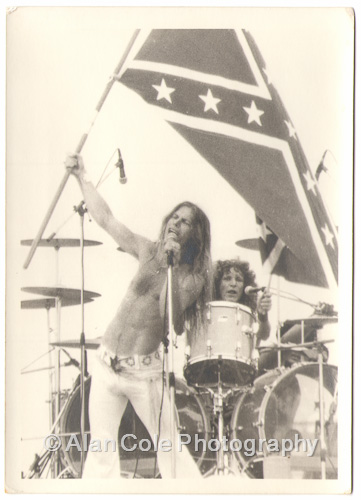
There happened to be two prints of this same frame of Jim Dandy in the accordion file, one yellowed and one nearly mint. Same well-water and probably the same printing session. Wash time and/or prints sticking together in the wash tray are all I can attribute the difference to because the yellowing includes borders. Hypo-clear (which I never did in the day) and watch your wash time!
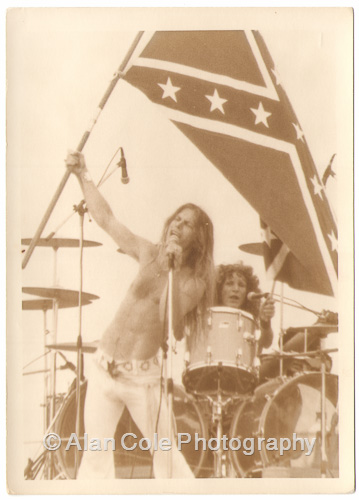
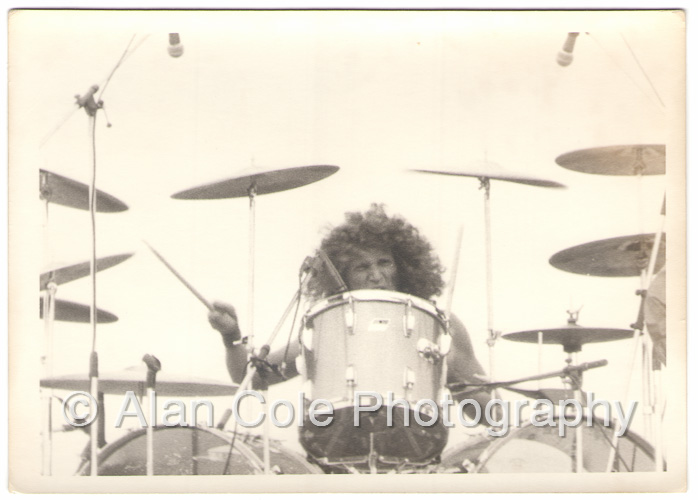
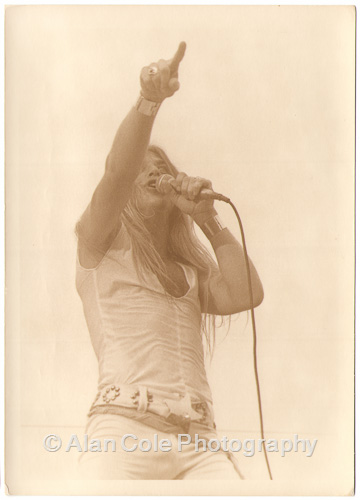
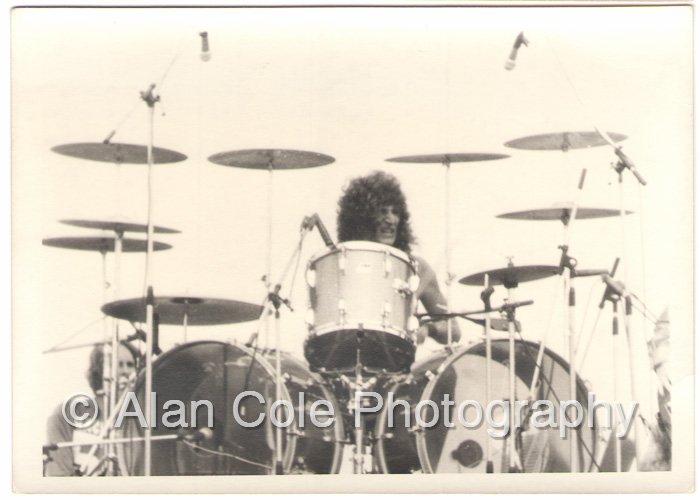
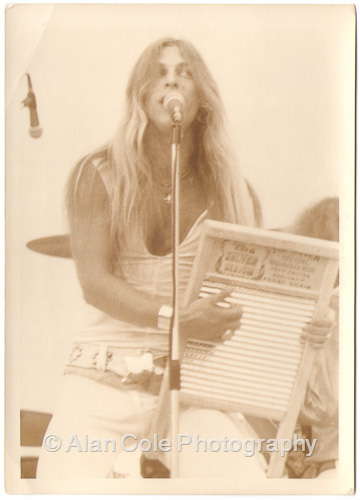
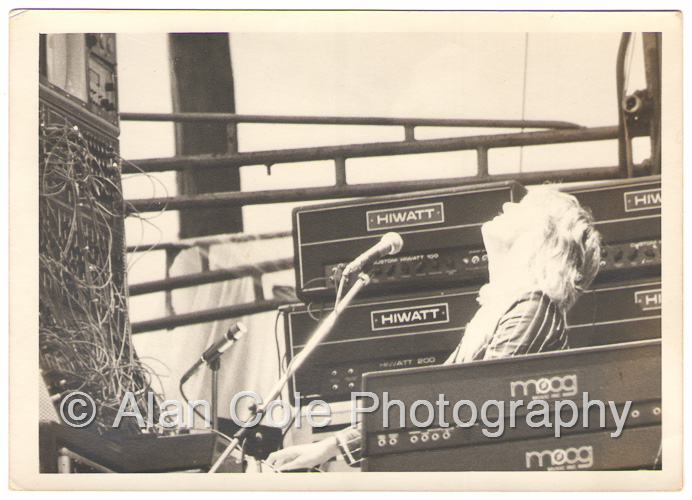
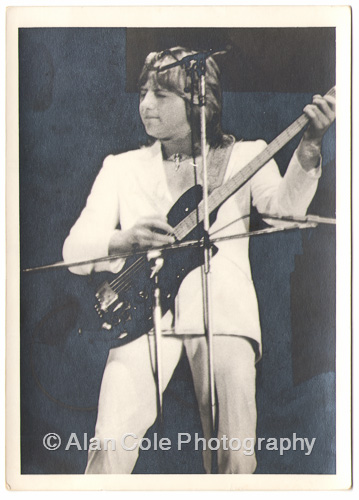
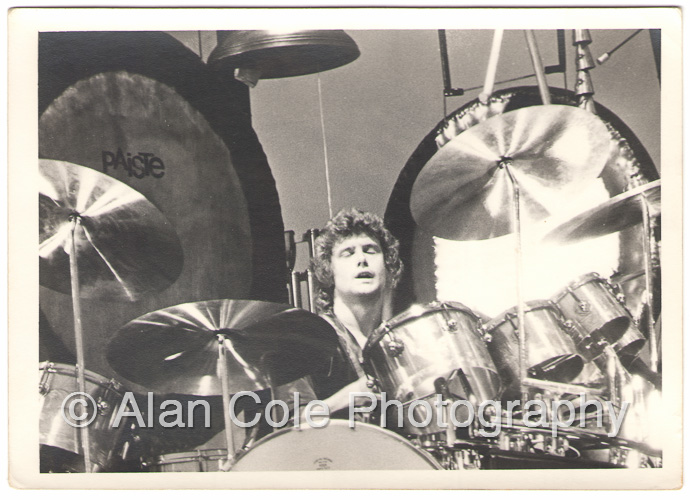
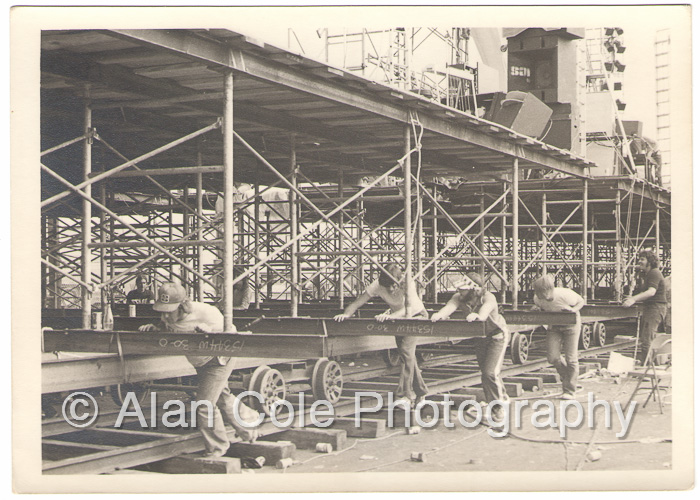
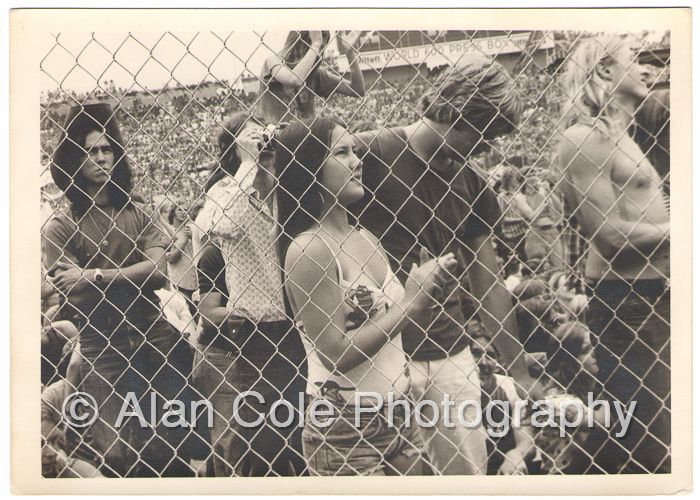
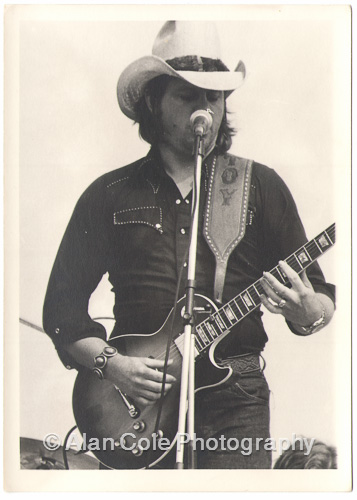
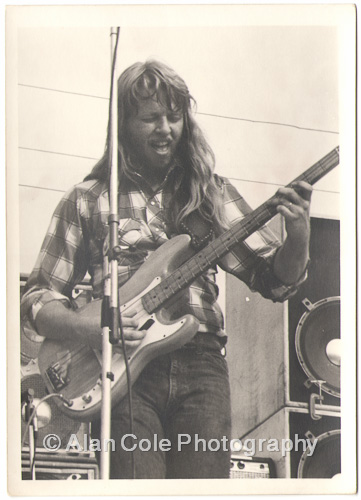
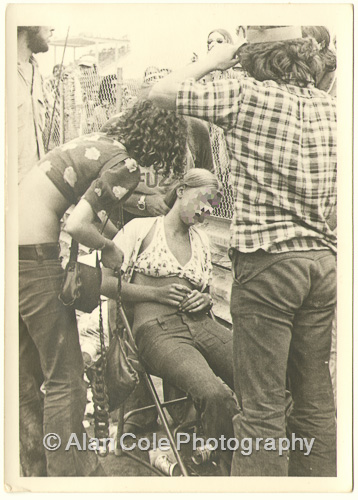
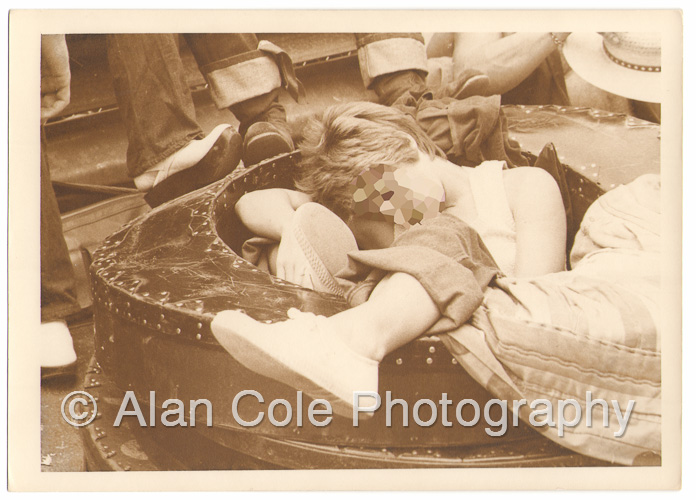
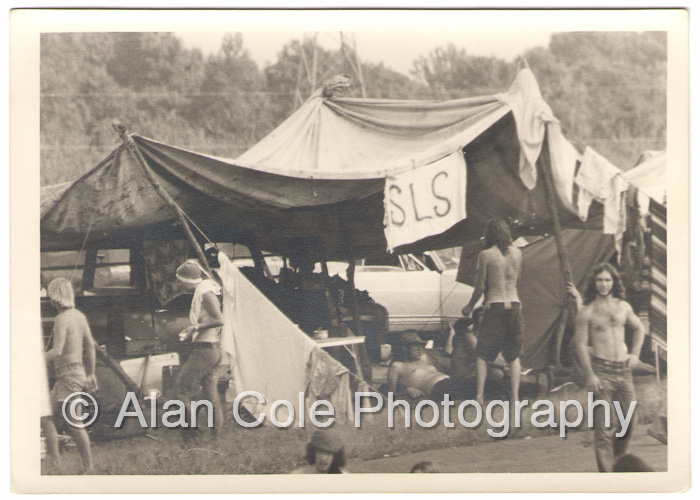
That’s all the rambling for now. Leave a comment if you were there or think that you might have been. Support the bands and buy some of their music!
Alan
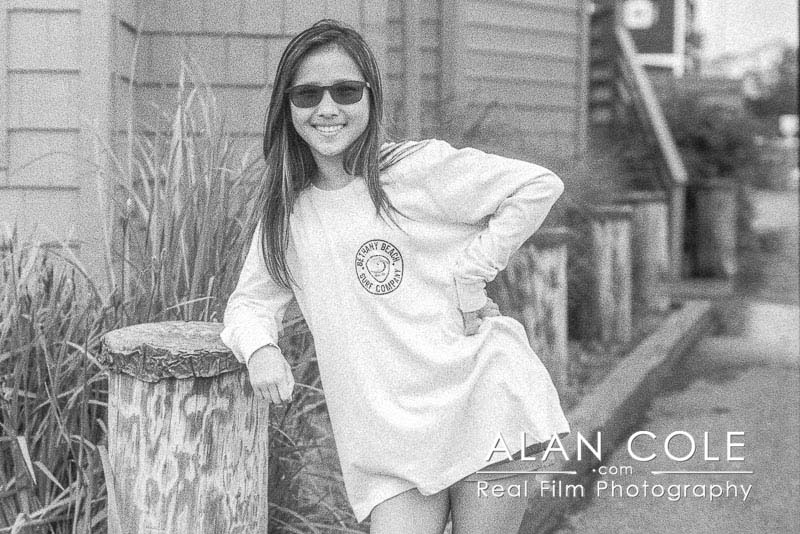
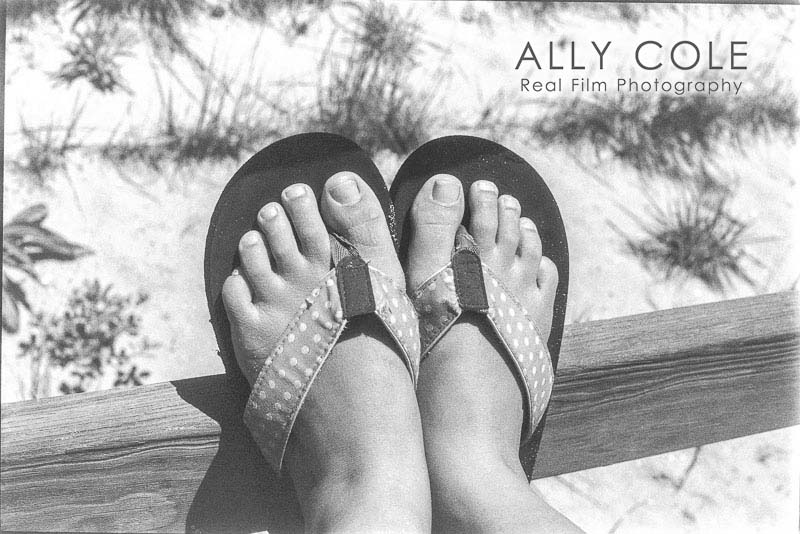
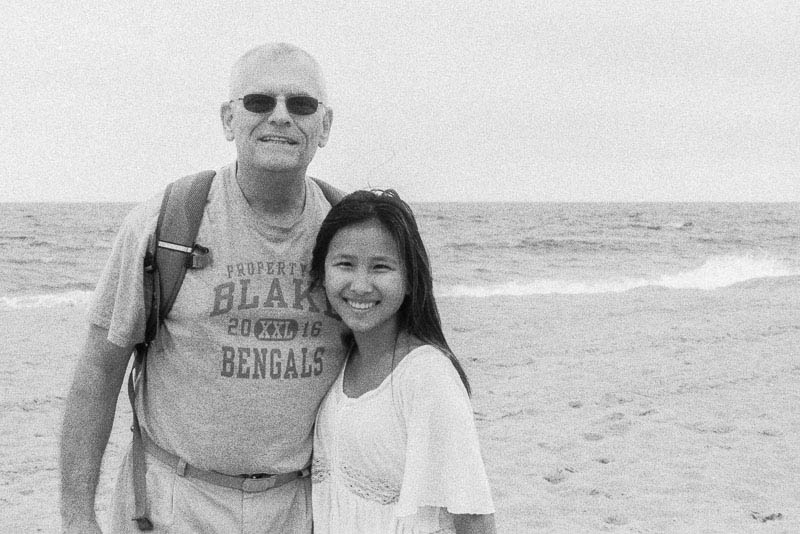

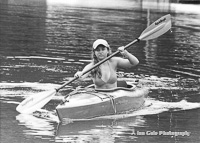 A lot more was shot than was printed. One of the first things you’ll notice about shooting film and printing in a darkroom instead of scanning negatives is that you don’t wind up with as many prints to show. We’re going the full-blown wet darkroom route, so the only time we have anything to publish is after prints have dried. We don’t own a film scanner and that’s not planned. I do plan to try my hand at digitally photographing negatives using a Nikon bellows and slide copy attachment, but they’re still in their boxes.
A lot more was shot than was printed. One of the first things you’ll notice about shooting film and printing in a darkroom instead of scanning negatives is that you don’t wind up with as many prints to show. We’re going the full-blown wet darkroom route, so the only time we have anything to publish is after prints have dried. We don’t own a film scanner and that’s not planned. I do plan to try my hand at digitally photographing negatives using a Nikon bellows and slide copy attachment, but they’re still in their boxes.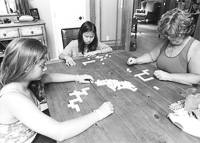
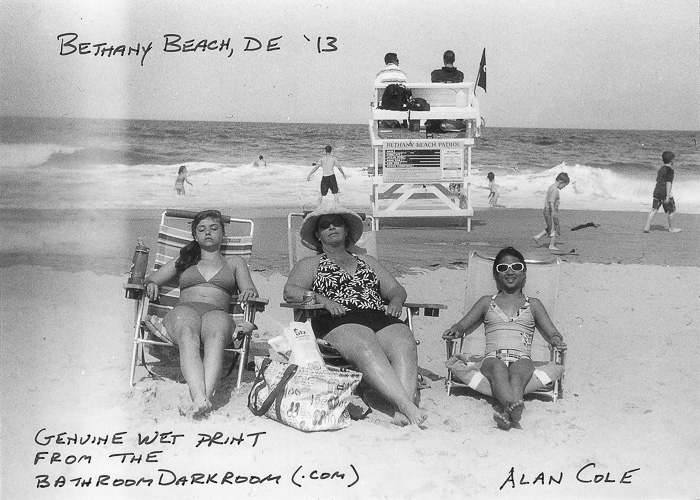
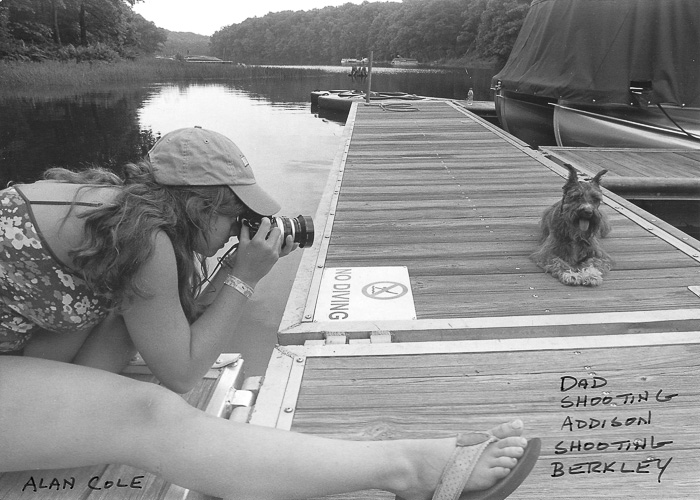
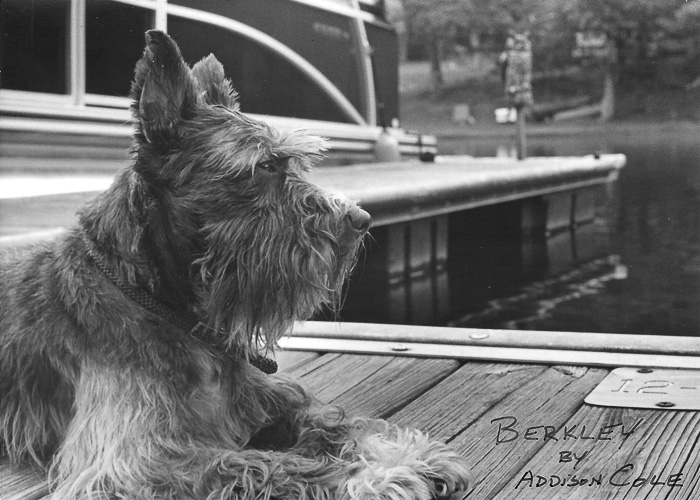
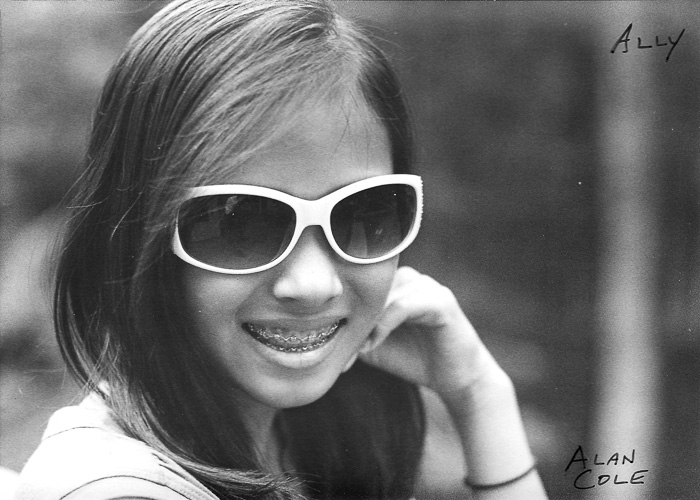
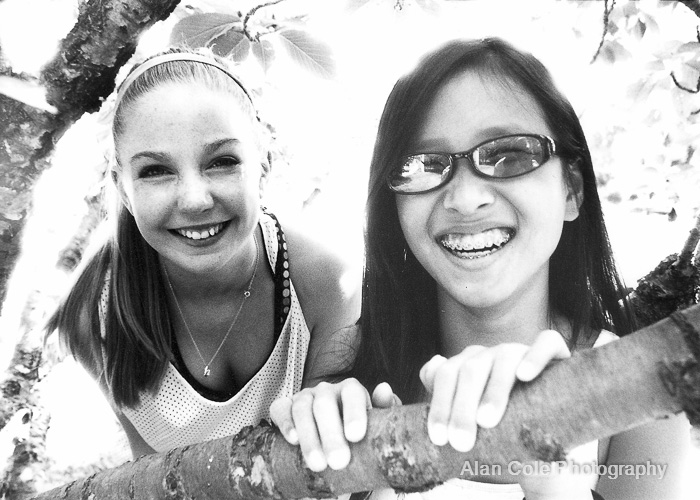
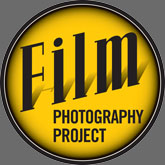























 Equipping a new darkroom with chemistry, paper and equipment can be as minimalist – or as extravagant – as you chose. It’s also possible to get a little carried away, if you can imagine that. Here’s what even a small collection of consumables looks like for someone like me who wants to get back into what they left years ago.
Equipping a new darkroom with chemistry, paper and equipment can be as minimalist – or as extravagant – as you chose. It’s also possible to get a little carried away, if you can imagine that. Here’s what even a small collection of consumables looks like for someone like me who wants to get back into what they left years ago.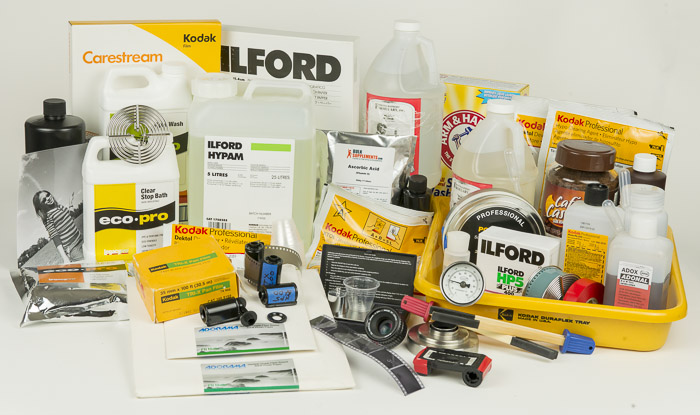
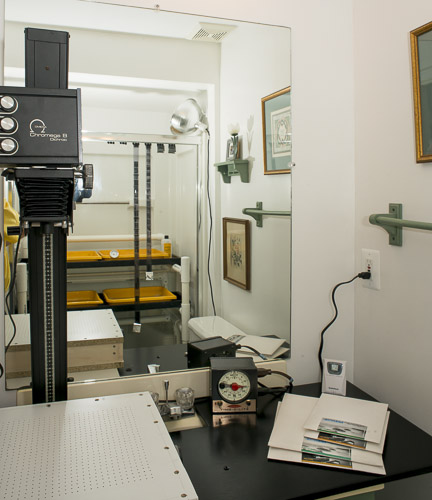
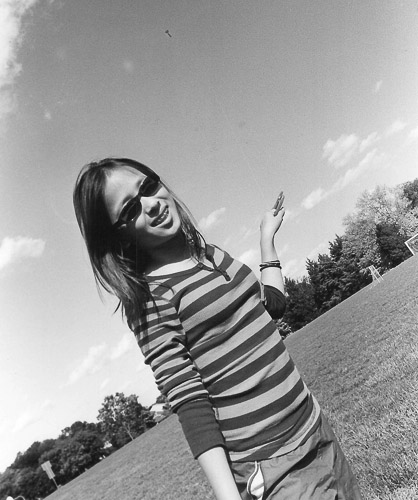
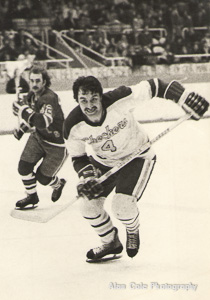 A bit about my background before we start. I saw a witticism on blogging that said, “Never before has so much been written by so many for so few.” Since you’re reading this, that means that at least one person at least started out reading what I wrote. And like a lot of the one or more of you who read on, my photographic upbringing includes familiar phrases like: family Instamatic, Dad had a darkroom in the basement of his family’s home (but without running water), Dad’s Argus C3, hockey games, football games, the August Jam rock concert (more in some later post – with some photos), NASCAR races (insert the name of the events where you and your camera snuck closer than you were allowed), sold photos to brother’s peewee hockey team parents after developing and printing all night in my bathroom darkroom, high school newspaper staff, high school yearbook staff, friend’s wedding, Popular Photography, the Amateuer Photographer’s Handbook, a Yashica MAT-124 that my Granddad gave me, a Yashica TL Electro-X that I bought myself, a Nikon F2 because it would make me a better photographer like the pros, joined the Navy, saw part of the world and photographed new places, had a family, reverted to point-and-shoot and VHS-C because those things needed the movies that are unwatched to this day, waded into digital, made enough shooting to support the habit, daughter hit high school, saw the work coming out of the film photography classes and asked Dad to teach it to her.
A bit about my background before we start. I saw a witticism on blogging that said, “Never before has so much been written by so many for so few.” Since you’re reading this, that means that at least one person at least started out reading what I wrote. And like a lot of the one or more of you who read on, my photographic upbringing includes familiar phrases like: family Instamatic, Dad had a darkroom in the basement of his family’s home (but without running water), Dad’s Argus C3, hockey games, football games, the August Jam rock concert (more in some later post – with some photos), NASCAR races (insert the name of the events where you and your camera snuck closer than you were allowed), sold photos to brother’s peewee hockey team parents after developing and printing all night in my bathroom darkroom, high school newspaper staff, high school yearbook staff, friend’s wedding, Popular Photography, the Amateuer Photographer’s Handbook, a Yashica MAT-124 that my Granddad gave me, a Yashica TL Electro-X that I bought myself, a Nikon F2 because it would make me a better photographer like the pros, joined the Navy, saw part of the world and photographed new places, had a family, reverted to point-and-shoot and VHS-C because those things needed the movies that are unwatched to this day, waded into digital, made enough shooting to support the habit, daughter hit high school, saw the work coming out of the film photography classes and asked Dad to teach it to her.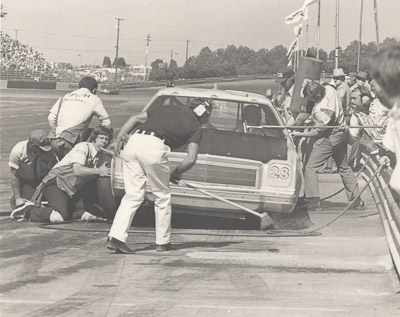 And here we are.
And here we are.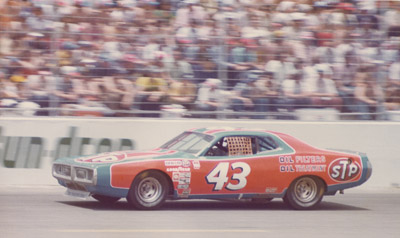 You’ll remember, if you’re relatively well-seasoned, that we used to read books, scour the articles and ads in Pop and Mom Photo, write to manufactures asking for literature and bug salesmen in camera stores to find out what gear was available and what techniques worked best. That’s been replaced in the 21st-and-a-half-century by trolling the Internet (contributing happens later). Extra points if you recognize the previous reference to a very specific part of your childhood.
You’ll remember, if you’re relatively well-seasoned, that we used to read books, scour the articles and ads in Pop and Mom Photo, write to manufactures asking for literature and bug salesmen in camera stores to find out what gear was available and what techniques worked best. That’s been replaced in the 21st-and-a-half-century by trolling the Internet (contributing happens later). Extra points if you recognize the previous reference to a very specific part of your childhood.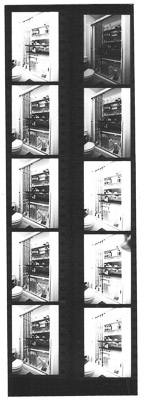 The months ahead are full of opportunities that include squeezing dry side, wet side and a place for the instructor to stand into a 4 1/2’ x 7 1/2’ half-bath and assembling the equipment without spending a mint. Film’s resurgence, albeit a niche from what I can see, must have driven gear prices up a few notches from the dump-the-film days early in the digital craze of the last decade. I don’t find the super bargains discussed in old forum posts, but bargains are still there if you’re patient and willing to do a little repair or cobbling-together. Future construction articles will cover the wet rack, repairing the used enlarger, building the vacuum easel, safelight strategy and other parts of the facilities. Photos will be digital until we get into production of the good kind that come from the bottom of a tray.
The months ahead are full of opportunities that include squeezing dry side, wet side and a place for the instructor to stand into a 4 1/2’ x 7 1/2’ half-bath and assembling the equipment without spending a mint. Film’s resurgence, albeit a niche from what I can see, must have driven gear prices up a few notches from the dump-the-film days early in the digital craze of the last decade. I don’t find the super bargains discussed in old forum posts, but bargains are still there if you’re patient and willing to do a little repair or cobbling-together. Future construction articles will cover the wet rack, repairing the used enlarger, building the vacuum easel, safelight strategy and other parts of the facilities. Photos will be digital until we get into production of the good kind that come from the bottom of a tray.